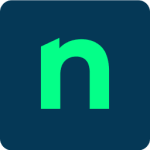What is our primary use case?
We primarily use the solution to support Airbus Helicopters.
It's great for handling support tickets and onboarding employees.
How has it helped my organization?
We have other facilities in the United States with teams in Herndon, Virginia, and Grand Prairie, Texas, and for networking, in Mobile, Alabama. By having our different specialists in different areas, we're able to leverage their expertise over a large geographical area.
What is most valuable?
They have these items called resolver groups that are quite useful, however, it's basically to assign tickets to various teams.
The onboarding of employees is very good.
It's great for handling new hardware requests or new user requests.
They offer standard templates. The more that you customize it, or add additional software requests, the more it becomes usable and powerful.
The solution is stable.
The scalability is there if you need it.
My understanding is that the pricing is reasonable.
ServiceNow is great. You can download the data into Excel and you can basically create reports. It's very flexible.
What needs improvement?
That features are already there, however, maybe they could have some tutorials or give more power to the users versus having specialist administrators doing things. There's a big knowledge base. There's a lot of know-how that's saved in there, however, actually allowing people to do their own thing is lacking a bit.
I know there are functionalities for using it on other platforms. However, specifically for iPhone or Android, if there's something where I'm walking around and working in different offices, if I'm able to look up information directly, instead of going back to my laptop, that would be ideal. Making a mobile version would be helpful.
It's pretty customized already. I don't think there's anything that would be an area to fix.
I know that I actually have the special panel for all the features that I use, like creating tickets, managing hardware. Anything that can be integrated into especially our other types of features, such as SCCM, Microsoft SCCM, being able to update hardware, instead of manually going inside there would be good.
For how long have I used the solution?
I've used the solution for the last year.
What do I think about the stability of the solution?
The solution is pretty stable. The only thing is that it's a cloud version, and therefore, if your network is slow or non-responsive, then ServiceNow becomes slow and unresponsive. That's a network issue. That is not an application issue.
What do I think about the scalability of the solution?
The solution is easy to scale. If we wanted to add other facilities, it would be fairly easy to do. Something that we're going to be taking on in the next year or so is integrating with another facility in Mirabel, Quebec. They do commercial aircraft. We do civilian helicopters. Integrating with that team more will be beneficial. We have around 60 people using it right now.
How are customer service and support?
I personally have never had any issues where I had to raise it directly to ServiceNow. I cannot speak on the topic of support.
Which solution did I use previously and why did I switch?
The company did use a different solution. It was not as integrated with the other parts of the company, which is why they switched.
How was the initial setup?
The company was using another product before. They implemented this, I would say, within six months. It's been in place for two years now and it's matured.
I was not there for the deployment.
We have one SRM, senior relationship manager, that basically maintains the digital workspace. He's in charge of updating the versions or deploying new features. There's one person that does that.
What was our ROI?
There are built-in surveys and we track those metrics, and the metrics have been positive for the last two years. There's been a great improvement.
Due to the fact that we're dealing with different subcontractors, we have a company that does the networking and we have a company that does the desktop hardware. If it's more application support or accounting specific, then it goes somewhere else. Being able to bridge between those different subcontractors is a major selling point.
What's my experience with pricing, setup cost, and licensing?
The pricing is reasonable. In terms of extra costs, likely if a company was going to do integrations, they might have to buy the different modules, however, I'm not involved in that.
What other advice do I have?
I'm just a customer and an end-user.
I am currently up to date with the latest version.
I'd advise potential new seers that they'll get good asset management and be able to manage tickets. It's all straightforward and usable. In the past, I've used other products, and they're not that scalable. If you're working in a company that has multiple facilities, multiple countries, the best way to go is with ServiceNow.
I'd rate the solution at a nine out of ten.
Which deployment model are you using for this solution?
Public Cloud
Disclosure: My company does not have a business relationship with this vendor other than being a customer.




















